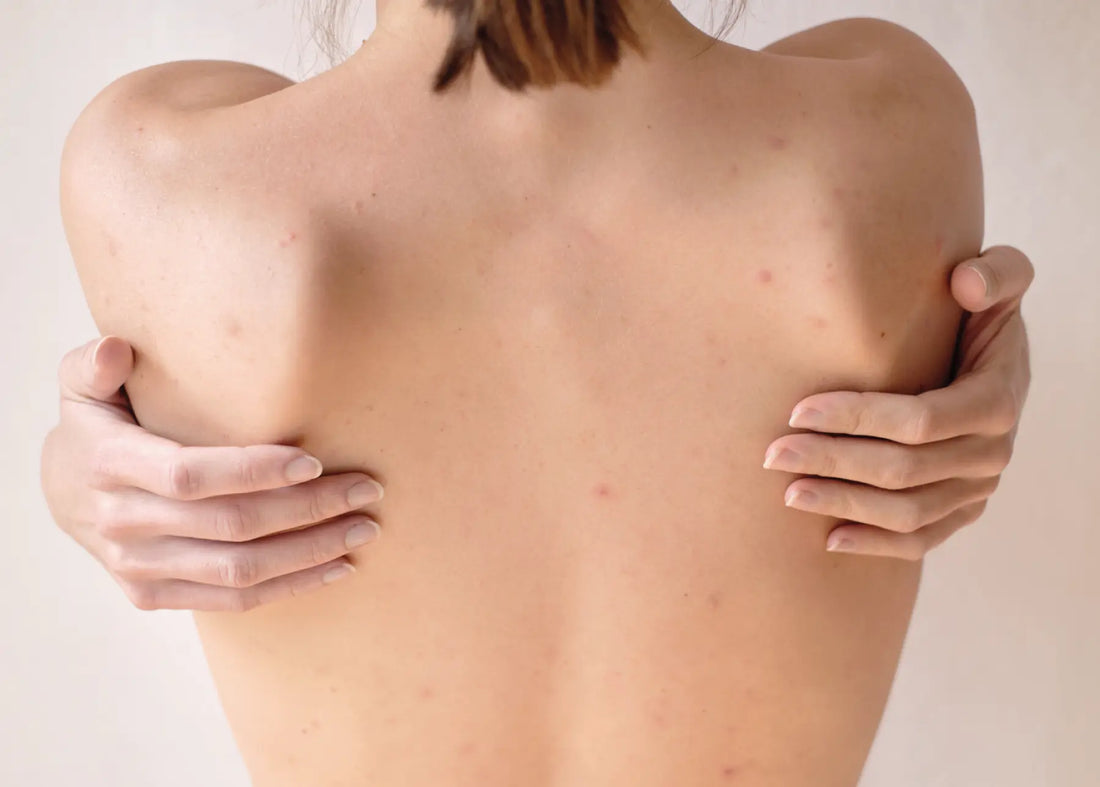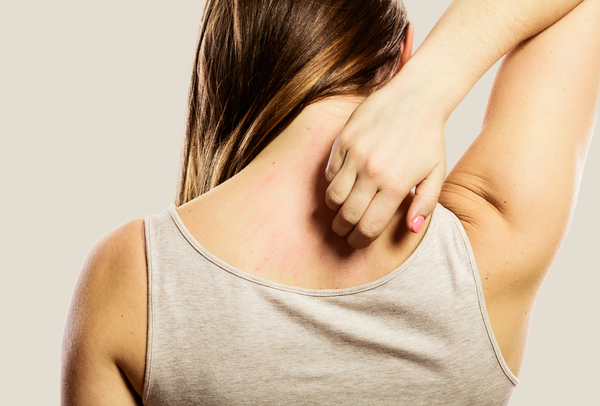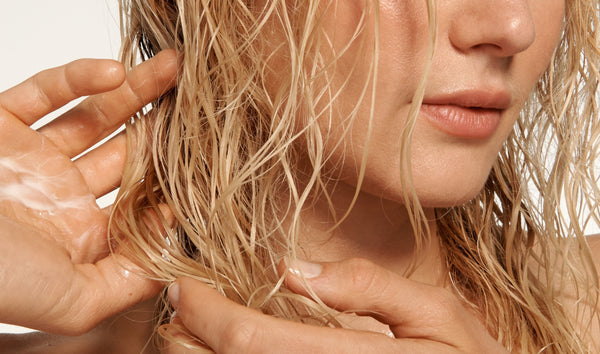You don’t need us to tell you that breakouts aren’t always limited to the face, and the back, shoulders, chest, and even buttocks can be common problem spots as well. Regardless of location, acne forms when pores become clogged with dead skin cells, oil, and C. acnes bacteria—and your haircare products may have something to do with it. If they are formulated with pore-clogging ingredients, all of your skin comes in contact with them as you rinse your shampoo and conditioner in the shower. Leave-in products can also transfer from your hair to the skin, or your hair to a pillow or towel that then comes in contact with the skin.
Lifestyle and acne
Beyond the basic acne-cycle steps, several lifestyle factors can contribute to body breakouts. For starters, it’s important to shower as soon as possible after exercising, and be mindful of your workout clothing. Tight-fitting clothes made of fabrics that create friction (such as sports-bra straps) or don’t “breathe” can trap oil, dirt, and debris on the skin and potentially make body acne worse. And when you hit the gym, it may be helpful to have anti-bacterial wipes on hand to make sure any equipment or yoga mats are clean before your skin comes in contact with them.
Diet may also play a role in breakouts on the face and body, as some studies have found links between dairy, highly processed foods, and acne. (However, research to date is not 100% conclusive and more studies are warranted.) According to the American Academy of Dermatology (AAD), following a low-glycemic diet may help reduce acne by minimizing spikes in blood sugar that cause inflammation throughout the body. These spikes also prompt the production of sebum, which is a known contributor to acne.
Although most of us would never consider stress to be a lifestyle “choice,” our busy schedules and never-ending to-do lists can influence the formation of acne as well. In fact, research has shown a correlation between increased stress and increased acne severity. This may because stress prompts the body to produce a hormone called cortisol that can stimulate the skin’s oil-producing glands. Keep in mind that the body also perceives a lack of sleep as stressor and produces cortisol in response, so too-little shut-eye can possibly be an acne trigger.
The emotional impact of body acne
If you struggle with body breakouts, you may ask yourself, “Why me?” According to a study of 1,001 adolescents or young adults with body acne published the Acta Dermato-Venereologica journal, most patients reported facial breakouts as well. This research also revealed that more than two-thirds of respondents thought about their body acne constantly, and over one-third said that body acne severely affected their quality of life, with women reporting a more significant impact than men.
How SEEN can improve body acne
As we mentioned earlier, haircare that contains pore-clogging ingredients can lead to breakouts on the face and body. This is exactly what led our founder, Harvard-trained dermatologist Dr. Iris Rubin, to create SEEN. We offer a full range of hair and skincare products that have been clinically proven to be non-comedogenic (which means they won’t clog pores) so you know your routine isn’t going to contribute to unexpected breakouts or make existing problem spots worse. In fact, in a dermatologist-graded study, 70% of participants with body acne and 52% of those with facial acne saw improvement after using non-medicated SEEN Shampoo and Conditioner as a regimen for eight weeks.[1]
The fact that this study showed that simply switching to SEEN’s non-medicated, non-comedogenic haircare can improve body breakouts is pretty major. And BTW, each and every SEEN product is also safe for sensitive skin, non-irritating, and available fragrance-free. Our goal is to deliver gorgeous hair and healthy-looking skin, without having to choose one over the other. Whether you experience body acne occasionally or more often than you’d like, SEEN is for you.
[1] In a dermatologist-graded clinical study, 27 subjects with mild to moderate acne used SEEN shampoo and conditioner as a regimen for 8 weeks. SEEN is non-medicated and can help those for whom hair products are contributing to acne.



